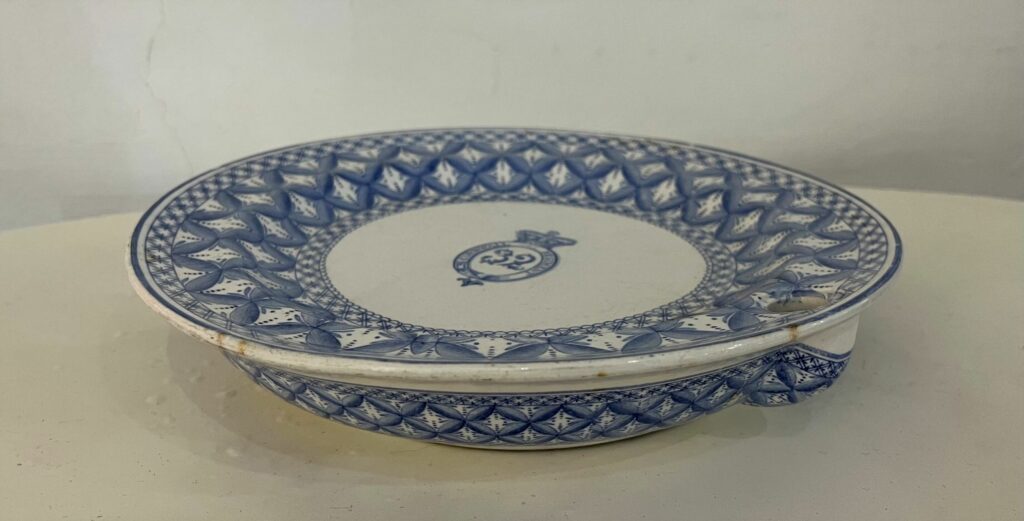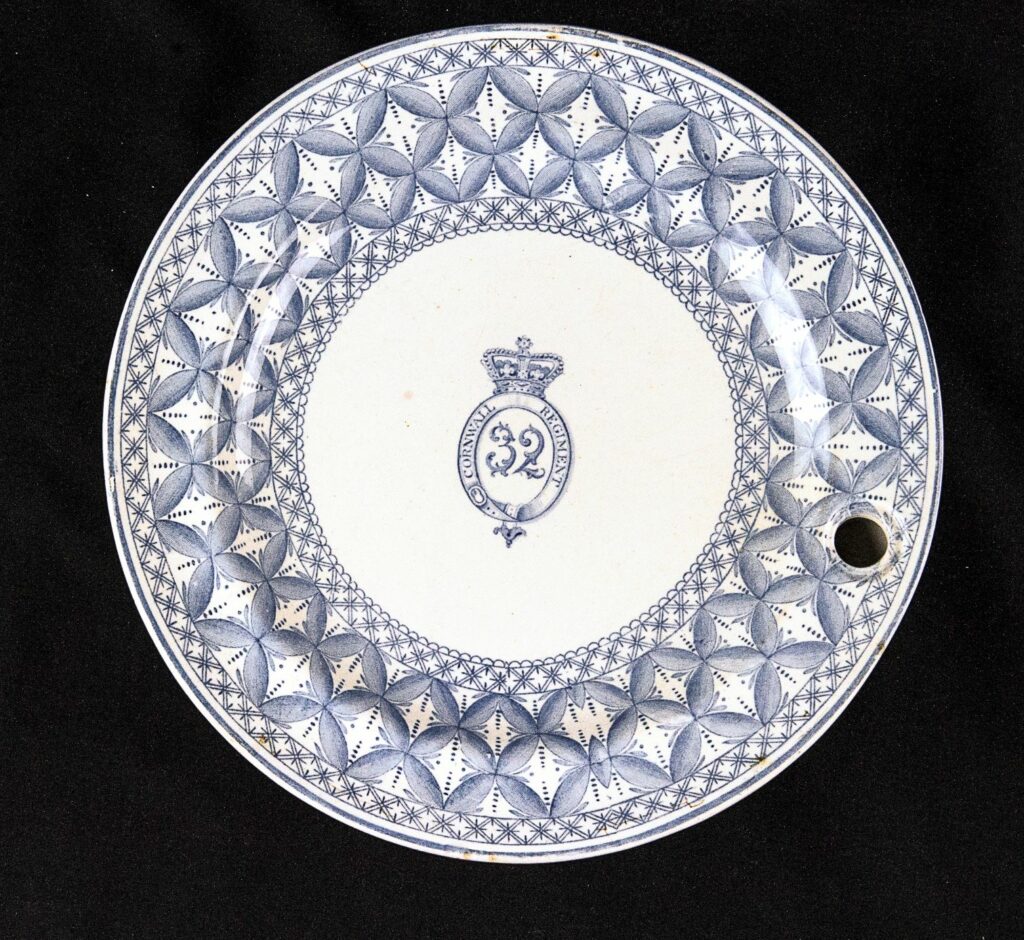Dating back to the early 1840s, these plates were made for the 32nd Regiment of Foot to take to India in 1846. The plates were produced by Copeland, a predecessor to Spode. From above they seem fairly standard, however the small hole located on the side of the plate allowed hot water to be poured into a reservoir beneath. This helped to keep soldier’s food nice and warm. Cooking facilities for soldiers were often very basic so this piece of equipment was appreciated.
Although these plates were most likely reserved for soldiers higher in command, you wouldn’t expect more than a simple and lacklustre meal of meat and bread to be served on them. Even items like sugar and fresh milk would have been seen as luxury at this time.

The plates were present during the Siege of Lucknow in 1857. Together with other regimental property, they were buried under fallen masonry and were given up as lost. However, this would not be the end for these plates, 75 years later they were discovered in a shop in a Lucknow Bazaar and were donated to the barracks by Capt. I E F Campbell DCLI in 1932. Despite their perilous history, they have survived in excellent condition.


